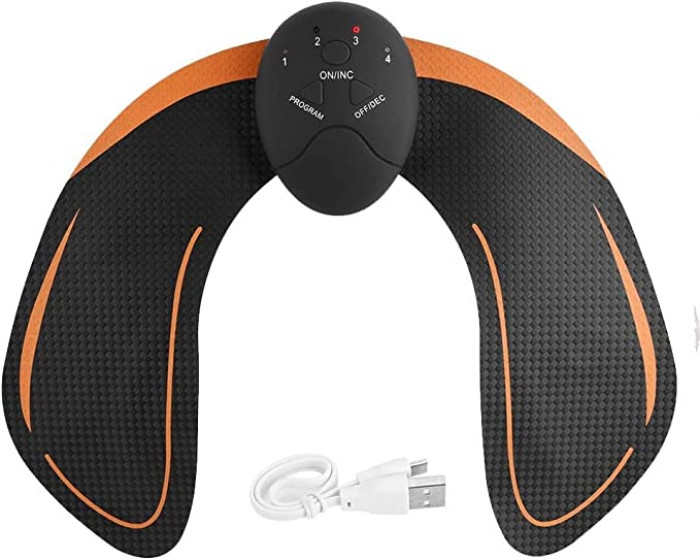Table of Content
Cubicbee.com is an online shopping destination, but it's crucial to determine its legitimacy before making a purchase. In this article, we will delve into the authenticity of Cubicbee.com, highlighting five reasons why it may not be a legitimate website. Additionally, we will explore effective methods to differentiate between genuine customer reviews and fake testimonials on websites. By understanding these factors, shoppers can make informed decisions and protect themselves from potential scams.

Cubicbee.com: Is This Website Legit?
Cubicbee.com presents itself as an online marketplace offering a wide array of products at competitive prices. However, several indicators raise concerns about its legitimacy. Here are five reasons why individuals should approach Cubicbee.com with caution:
- Lack of Transparency: Cubicbee.com lacks clear and comprehensive contact information, including a physical address and phone number. Legitimate websites typically provide these details to establish trust and ensure effective communication with customers.
- Absence of Secure Connection: When visiting Cubicbee.com, users may notice the absence of a secure connection (https://). Secure connections encrypt data, safeguarding personal and financial information. The lack of encryption poses potential risks to customers' sensitive data.
- Suspicious Pricing: Cubicbee.com advertises products at exceptionally low prices compared to established retailers. Prices that seem too good to be true often indicate counterfeit or substandard products. This discrepancy raises questions about the website's credibility.
- Negative Customer Feedback: Genuine customer reviews play a vital role in assessing a website's authenticity. Regrettably, Cubicbee.com has garnered negative feedback from customers, who have expressed dissatisfaction with non-delivery of products, poor customer service, and challenges in obtaining refunds. Such feedback is concerning and warrants caution.
- Limited Third-Party Validation: Trustworthy platforms that evaluate the reputation and legitimacy of websites, such as Scamadviser and Better Business Bureau, provide little to no information about Cubicbee.com. The absence of external validation raises doubts about the website's trustworthiness.
Differentiating Between Genuine Customer Reviews and Fake Testimonials on Websites
Distinguishing between genuine customer reviews and fake testimonials is crucial to making informed purchasing decisions. Here are some effective methods to help you differentiate between the two:
- Assess Review Specificity: Genuine customer reviews often include specific details about the product, shipping experience, and customer service. Fake testimonials, on the other hand, tend to be vague and generic, lacking specific information.
- Examine Review Language and Tone: Authentic reviews reflect a range of sentiments and language styles. If a website showcases an overwhelming number of excessively positive reviews with identical phrases, it may be an indication of fake testimonials created to boost the website's reputation.
- Verify Reviewer Authenticity: Some platforms allow customers to link their reviews to verified purchases or display verified badges next to their reviews. Checking for these indicators can provide a level of confidence in the authenticity of the customer feedback.
- Look for Balanced Review Distribution: Genuine websites usually have a mix of positive, neutral, and negative reviews. If a website displays an extreme bias with predominantly positive or negative reviews, it may raise suspicions of manipulation or fake testimonials.
- Cross-Reference Reviews: Compare reviews from multiple sources, including the website itself, external review platforms, and social media. Consistency in the feedback across different platforms adds credibility to the customer reviews.
By employing these strategies, consumers can better navigate the sea of online reviews and make well-informed decisions based on genuine customer experiences. In conclusion, while Cubicbee.com may present tempting offers, it's essential to approach the website with caution. The lack of transparency, negative customer feedback, and limited third-party validation should raise concerns about

How to Avoid Online Shopping Scams
Online shopping scams are popular, but you can protect yourself from becoming a victim by taking the right steps. Here are some important ways to stay safe when shopping online:
- Research the Website: Before you buy something from a website, do a lot of research on it. Look for customer reviews, ratings, and feedback from reputable sources. Check if the website has a physical address and contact information.
- Use Secure and Trusted Websites: Stick to well-known and reputable online retailers or brands with established credibility. Look for secure connections (https://) and familiar payment gateways to ensure your transactions are protected.
- Be Cautious of Unrealistic Deals: If a deal seems too good to be true, probably it will be fake. Be wary of websites that offer significantly lower prices compared to competitors. Unrealistically low prices can indicate counterfeit products or scams.
- Protect Your Personal and Financial Information: Be cautious about sharing sensitive information online. Only provide personal and financial details on secure websites, and avoid sharing unnecessary information that scammers can exploit.
- Verify the Website's Legitimacy: Look for signs of a legitimate website, such as clear policies on shipping, returns, and customer support. Legitimate websites often provide detailed product descriptions, high-quality images, and comprehensive information about their services.
- Use Secure Payment Methods: Opt for secure payment methods such as credit cards or reputable online payment systems like PayPal. These methods offer added protection, including the ability to dispute charges or initiate chargebacks in case of fraudulent activities.
- Trust Your Instincts: If something feels off or suspicious about a website, trust your instincts. Pay attention to warning signs, such as poor website design, spelling and grammar errors, or a lack of customer support responsiveness.
Red Flags or Warning Signs of Fraudulent Websites
Recognizing red flags or warning signs that indicate potentially fraudulent websites can help you steer clear of scams. Here are some common red flags to watch out for:
- Poor Website Design and Quality: Fraudulent websites often have low-quality designs, including amateurish layouts, mismatched fonts, and distorted images. Pay attention to visual inconsistencies and unprofessional appearances.
- Contact Information That Is Missing or Unclear: Legitimate websites usually have clear and complete contact information, such as an email address, a phone number, and a real address. Be cautious if the website lacks this information or only provides generic email addresses or contact forms.
- No Secure Connection (http instead of https): A secure connection is crucial for protecting your sensitive information during online transactions. If a website lacks a secure connection or the padlock icon in the address bar, it's best to avoid providing personal or financial details.
- Unrealistic Discounts and Prices: Be cautious of websites that offer excessively discounted prices or deals that seem too good to be true. Scammers often lure unsuspecting shoppers with unrealistically low prices to entice them into making purchases.
- Limited or Negative Customer Feedback: Check for customer reviews and feedback on independent review platforms. If there are a lot of bad reviews, concerns about not getting what was ordered, bad customer service, or scams, you should stay away from the website.
Steps to Ensure the Authenticity of a Shopping Website
Follow these steps to make sure a shopping website is real:
- Research the website Reputation: Find out about the site's reputation by reading reviews, scores, and comments from other customers. Independent review platforms and social media can provide insights into the website's credibility and customer experiences.
- Verify External Validation: Utilize trustworthy platforms like Scamadviser, Better Business Bureau, or Trustpilot to check the reputation and legitimacy of the website. These platforms analyze user feedback and provide ratings and information










